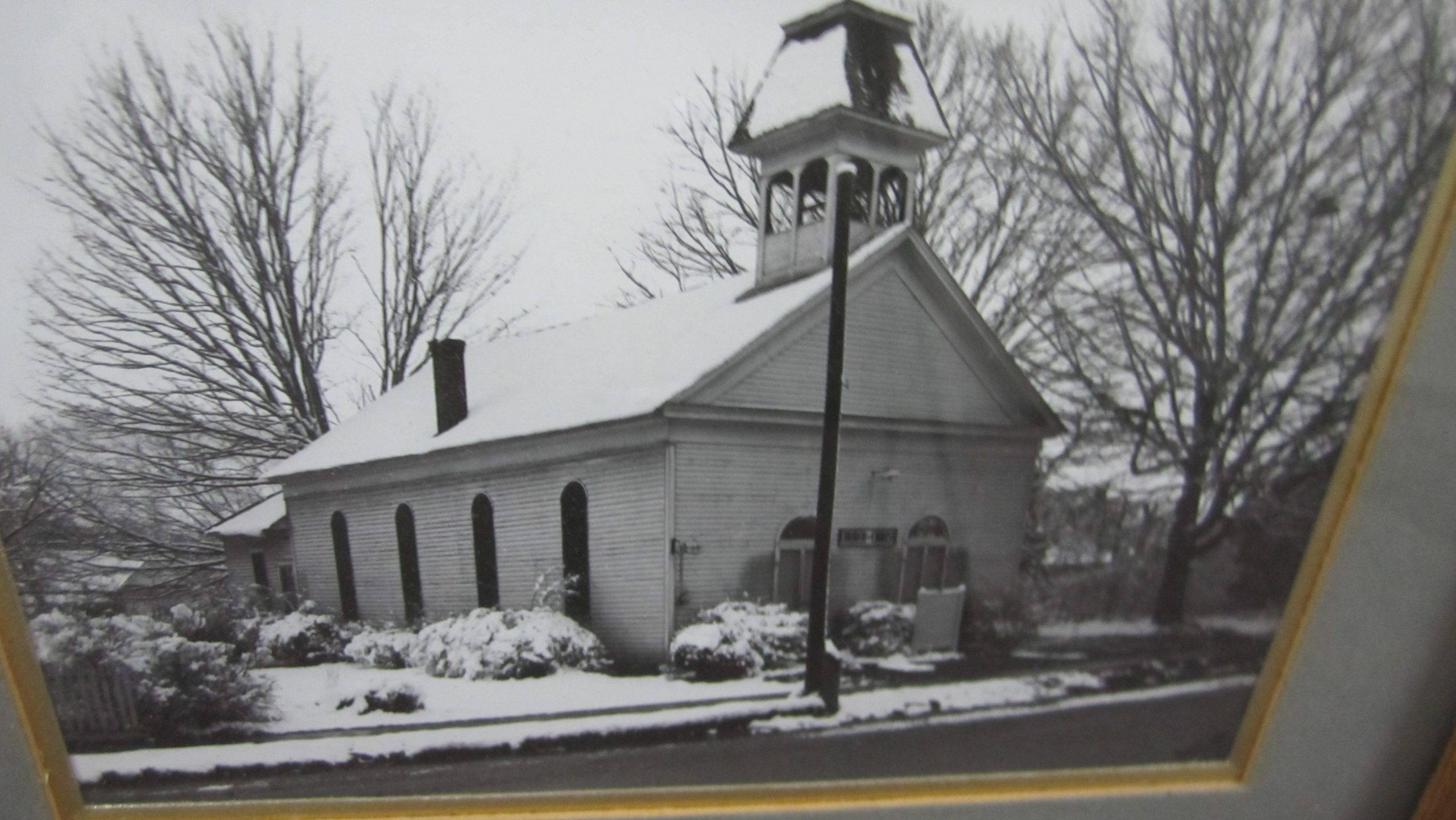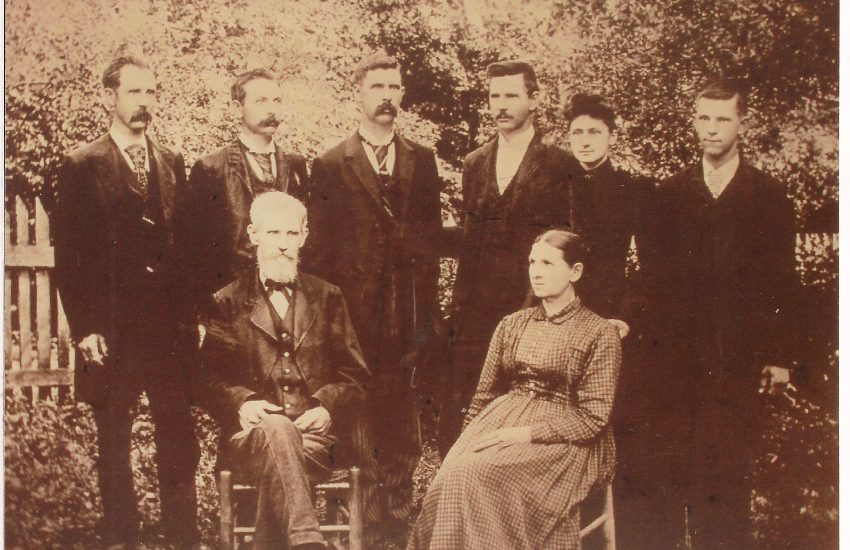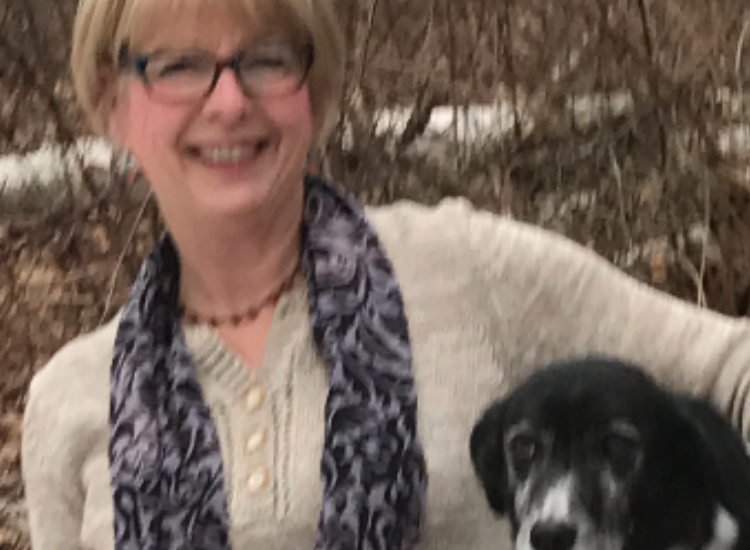Former Church served as a Confederate Soldier Hospital
It was through newspaper articles the public was made aware of plans to tear down a building on West Broad Street in order to make way for a new municipal building to be constructed there. More than likely, there are not too many people living today who know the significant historic facts connected to that property. According to information in Robert and Mary Eldridge’s History of Overton County book, the original building that once stood on that property was a large log structure where the Livingston Church of Christ began. The following is taken from the Eldridge book: “The Church of Christ was organized as a congregation in Livingston in June of 1847. Joseph Goodbar, who lived on the South side of the public square, on June 7, 1848, deeded Lot #90 of West Broad Street on which to erect a church building. On this lot a large log building was erected. This building was heated by a fireplace and was used for a house of worship until sometime during the War Between the States when it was burned by Federal soldiers because it was being used as a hospital for some Confederate soldiers who were sick or wounded. After a period of about twenty years, a new frame building was erected on the site of the first building. A large part of the work on the new building was done by one of the faithful members, Phillip Myers, who did a great part of the carpentry work, planing much of the lumber by hand. He also rang the church bell each Sunday morning for many years. The frame building was remodeled in 1954 with Herman Qualls as the contractor for the price of $6,000.00. This building was sold to Overton County on October 8, 1962 for the price of $20,000.00 after the congregation had decided to relocate and erect a new church building.”
Even though the log structure was burned during the Civil War, the facts as to why such an incident occurred is something that should be noted and preserved not only by those who are interested in our local history. It seems to me the very least thing that could be done is this site have an historical marker erected in order to preserve very important facts about this property. In addition to my being concerned that another of Livingston’s older structures was destroyed by way of a bulldozer, I also have a personal reason. The name “Goodbar” is one that shows up in my family tree. The following is taken from research done on the Goodbar family by Carmen E. Clark of Lexington, VA: “Joseph Goodbar, son of William Goodbar and wife Sarah Pearman, at age l8, left his parental home without notice in 1804 and went to Middle Tennessee. The story has been told that the young Goodbar who, at a log rolling, did something which displeased his father, in that he was caught whipping the oxen used to haul logs. His father snatched the whip from his son and larruped him with it in the presence of other men. The next morning, the young lad left home and his destination was not known. More than likely, young Joseph probably joined a group of pioneers pushing Southwest through the Valley of Virginia. He settled near Monroe in that portion of Jackson Co, TN which, in 1806, was taken from Jackson to form Overton County. Monroe was the county seat until 1835 when the courthouse and county government were transferred to Livingston. Joseph married Nancy Masters, daughter of Hillary and Mary (Davies) Masters then residents of the Mt. Gilead community of Overton County. Joseph was the recipient of land grants along Roaring River, owned slaves, and later was a merchant in Livingston. His store was located on the southeast corner of the public square. Nancy died October 27, 1855 and Joseph died December 9, 1859. They are buried in the Goodbar Cemetery near Livingston. Joseph and Nancy (Masters) Goodbar, progenitors of the Goodbars of Tennessee, reared a family of seven sons and four daughters.” Research about the Goodbars includes information on each individual child of Joseph and Nancy Goodbar. Of particular interest to me was information about their son James Madison Goodbar who was born August 23, 1816 in Overton County, TN. He married Verlinder Cullom, daughter of Alvan and Susan (Jones) Cullom. Verlinder’s parents were living on a large plantation in Overton County where Alvan Cullom began the practice of law, and later was a Representative from Tennessee in the U.S. Congress, and Judge of the Fourth Judicial Circuit of Tennessee. After James Madison Goodbar’s marriage, he purchased over 600 acres on the west fork of the Obed River about 12 miles from Livingston. He built a substantial residence, storehouse, large barn and stables, engaging in merchandising, farming and stock raising. Before the outbreak of the Civil War, he had accumulated a comfortable fortune and owned many slaves. His plantation was named Walnut Grove and he was postmaster there from 1850-60. With the downfall of the Confederacy, he lost his slaves and his plantation was stripped of all livestock with the exception of one poor, vermin-infested horse. Outstanding debts for merchandise and farm products were almost a total loss since those who owed him were unable to pay. Overton County, being on the border between North and South, was subjected to many depredations of the guerrillas, both Union and Confederate. The schools were destroyed. Giving a high priority to the education of his children, James Madison sold his plantation and moved to Lebanon, TN where he was a merchant. About 1870, he bought the Governor Jones home with two hundred acres located 1-1/2 miles from Lebanon on the Cumberland Pike where he resided until his death on February 2, 1905. James Madison, Verlinder and nine of their children are buried in the Cedar Grove Cemetery in Lebanon.
All eleven children were born at the Walnut Grove homestead, and the four who died in infancy or very young were originally buried in the family cemetery there. The fifth child of James Madison Goodbar and wife Verlinder Cullom Goodbar, a son named Alvan Burr Goodbar, born May 2, 1849 at Walnut Grove, the family homestead in Overton County, attended a subscription school at the old log church building in the Bethlehem community. His father removed Alvan and his other children from the school in 1861 because the teacher, Mary Catherine Sproul, and her father, James Sproul, were strong-willed Unionists. All schools were closed and education was at a standstill in Overton County during the Civil War. After the war, Alvan attended Cumberland University. Following his marriage and birth of a son, he moved his family to St. Louis where he became president of Goodbar Shoe Manufacturing Company for more than 25 years before his retirement in 1927. A keen student of history, he wrote some articles for publication based on his recollection of the Civil War. His unpublished genealogy is based chiefly on notes or his memory of facts his father related.
Emily Wakefield Goodbar, my great-great grandmother for whom I am named, was the seventh child and youngest daughter of Joseph and Nancy Masters Goodbar. Emily married on May 19, 1850 Edward Bradley Draper, born March 18, 1804 near Bagdad, Jackson County, TN, son of Thomas Draper, Jr. and wife Sally (Lyles) Draper. They had eight children, one of those being my grandmother, Ninnie Geneva Draper McCormick, wife of Marvin McCormick.
Although some who read this may think it’s more about my family genealogy than trying to share historic information about the property, that certainly isn’t the case. By sharing this information, I am hopeful that those who make the decisions regarding what happens in our county government will read this in its entirety, and by reading it, will at least be able to have a look back at the history of the property. Even though the building that was torn down was not the original log structure, nor was it the older framed building, it seems a shame to me to just to wipe away forever a connection to outstanding events in the history of Livingston and Overton County. Golda Meir once said, “One cannot and must not try to erase the past merely because it does not fit the present.”


